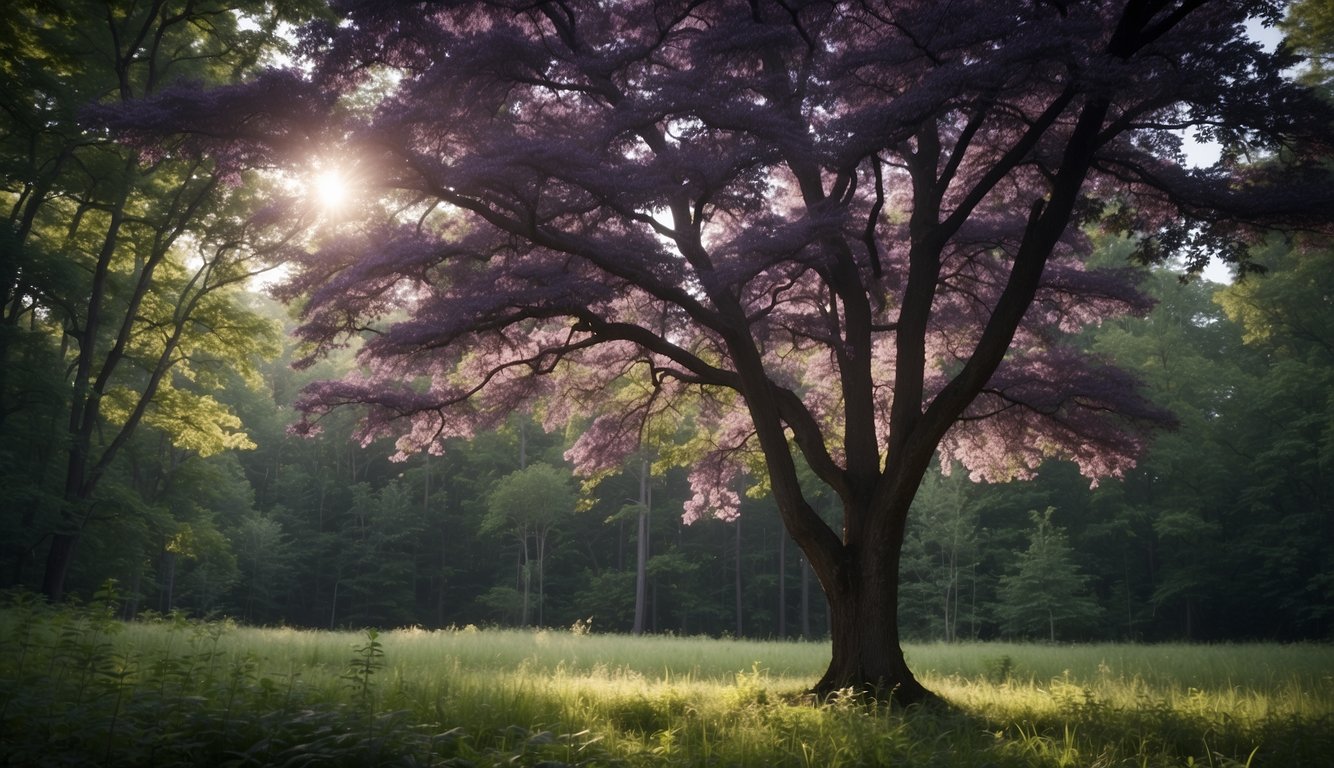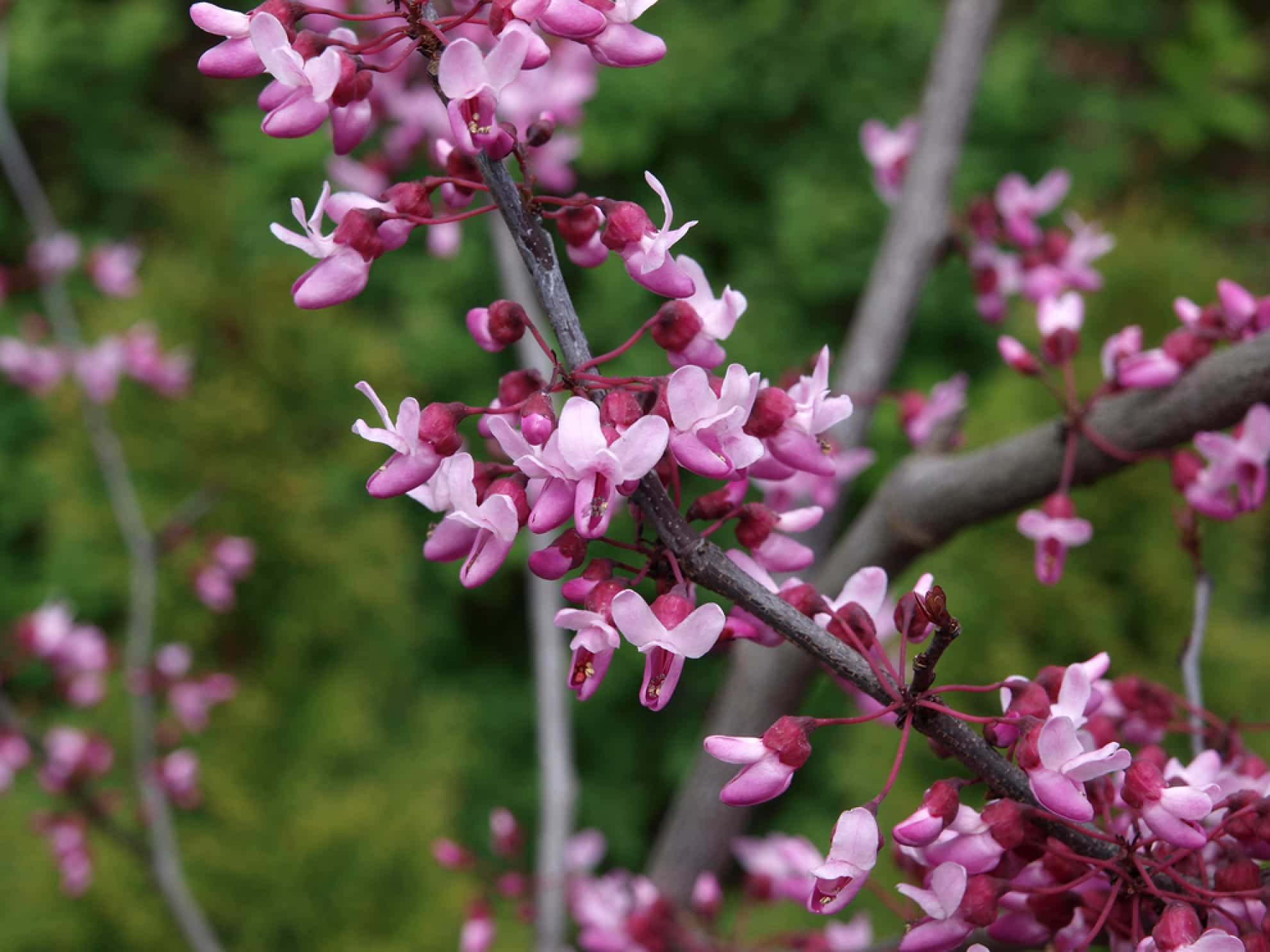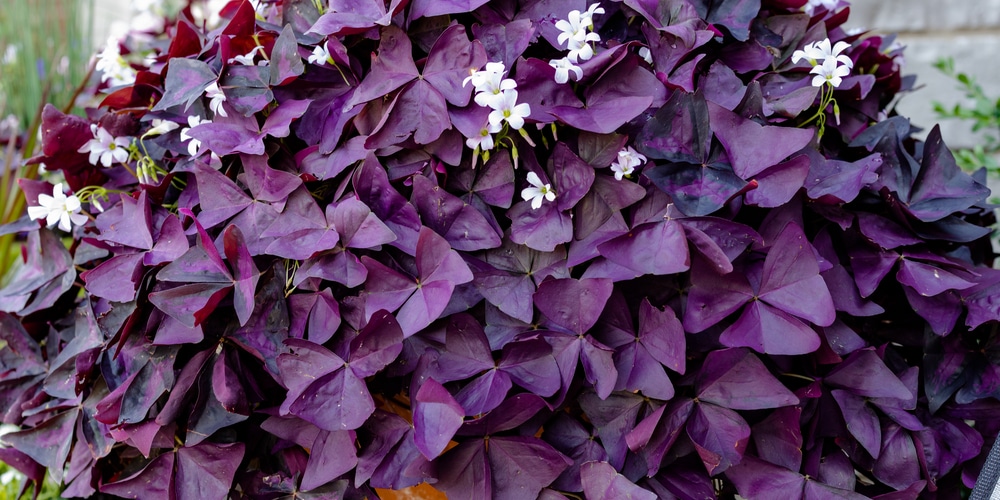In the varied landscape of Indiana, the majesty of purple flowering trees cuts a striking figure among the state’s natural flora.
The color purple in nature signals uniqueness and rarity. When it manifests in the form of blooms on Indiana’s trees, it becomes a spectacle of natural beauty that draws enthusiasts from far and wide.
From small ornamental varieties to larger shade-providing species, these trees don the landscape with their vibrant hues, contributing significantly to the state’s biodiversity and aesthetic charm.

The allure of purple-flowering trees is not only in their visual appeal but also in their adaptability to Indiana’s climate and soil conditions.
Trees like the Eastern Redbud and varieties of Crape Myrtle are among the popular choices.
They not only enhance the visual appeal of landscapes across Indiana but also play a role in the local ecosystem, providing habitat and food for wildlife.
The significance of these trees extends beyond their beauty, with cultural and environmental impacts that contribute to both local heritage and ecological balance.
Key Takeaways
- Purple flowering trees enhance Indiana’s natural beauty and biodiversity.
- They are adapted to local climates and contribute to the ecosystem.
- These trees hold cultural significance and answer common ecological questions.
Origin of Purple Trees in Indiana
Indiana, known for its varied climate, hosts a range of flora which includes several species of trees that produce purple blooms.
Historical Significance
The historical significance of purple-flowering trees in Indiana is often connected to their ornamental value and prevalence in local traditions.
Gardeners and horticulturists have cultivated such trees for their aesthetic appeal, contributing to the character of both private gardens and public spaces.
Species Identification
Key to understanding the origin of purple trees in Indiana is identifying the specific species and tracing their introduction to the region.
One prominent purple-flowering tree found in Indiana is the Eastern Redbud (Cercis canadensis).
This tree is native to the eastern United States, including Indiana, and is recognized by its heart-shaped leaves and clusters of bright purple flowers in early spring.
Another species is the Purpleleaf Plum (Prunus cerasifera), an ornamental tree valued for its vivid purple foliage and blooms which, while not originally native, has been integrated into Indiana’s horticultural landscape.
Here’s a quick reference table for two common purple-flowering trees in Indiana:
| Common Name | Scientific Name | Characteristics |
|---|---|---|
| Eastern Redbud | Cercis canadensis | Heart-shaped leaves; clusters of purple flowers |
| Purpleleaf Plum | Prunus cerasifera | Purple leaves; pink to white flowers |
Indiana Loves Purple Trees
Purple-flowering trees carry a cultural significance in Indiana, often symbolizing the arrival of spring and serving as focal points for community gatherings and artistic inspiration.
Local Festivals
In Indiana, the bloom of purple-flowering trees such as the redbud signals the onset of spring, prompting various local festivals.
Communities celebrate these colorful displays with events like the Vincennes Rendezvous, which includes redbud tree viewings.
- Connersville’s Redbud Festival: A weekend of activities centered around the local redbud trees in full bloom.
Symbolism in the Arts
Purple trees make frequent appearances in local art, acting as symbols of renewal and vitality.
They have inspired numerous works, from poetry to painting, with their vibrant hues evoking emotional responses.
- Literature: Poets reference purple trees as metaphors for transformation.
- Visual Arts: Paintings of purple trees are prevalent, celebrating Indiana’s natural beauty.
Environmental Considerations

When selecting purple-leaved trees for the Indiana environment, considerations must be made regarding their ecological impact and the efforts required to ensure their conservation and sustainability.
Ecosystem Roles
Purple-leaved trees, like Cercis canadensis ‘Forest Pansy’, play a distinctive role in Indiana’s ecosystems.
The native Eastern Redbud, for example, not only adds visual appeal with its purple foliage but also serves as an early spring food source for pollinators.
Ecosystem services these trees provide include:
- Habitat: They offer nesting sites and shelter for various species.
- Food: Flowers and fruits serve as a food source for wildlife.
Conservation Efforts
Preservation of native species and their cultivars, like purple-leaved trees, involves targeted conservation efforts.
These efforts are critical in maintaining native biodiversity and can include:
- Planting Guides: Assistance to residents on proper planting techniques and selection.
- Urban Forestry Programs: Initiatives like Indiana University’s Environmental Resilience Institute collaboration help expand urban canopies.
- Conservation Education: Public education on the importance of native plants in landscaping.
Adaptation strategies are also implemented to help these trees withstand Indiana’s varying climatic conditions.
Frequently Asked Questions
Indiana’s spring blooms not only signify the arrival of warmer weather but also bring a kaleidoscope of colors to local gardens, with various species of trees showcasing purple flowers and foliage.
This selection of FAQs addresses common queries about purple-flowering and purple-leafed trees that enhance Indiana’s landscapes.
What types of trees with purple flowers commonly bloom in Indiana during spring?
In Indiana, spring brings the vibrant purple blooms of several tree species, including the Eastern Redbud, which is well-loved for its stunning floral display.
The Purple Leaf Plum also blooms with purple flowers, adding a burst of color to the Hoosier state’s springtime scenery.
How can I identify a tree with purple flowers in Indiana?
One can identify trees with purple flowers by their blooming patterns, leaf shapes, and bark characteristics.
Many purple-flowering trees in Indiana, such as the Eastern Redbud, have heart-shaped leaves and distinct branching patterns. Consulting a tree identification guide or using a mobile app can aid in distinguishing these species more accurately.
What are the names of dwarf trees with purple leaves or flowers that can be grown in Indiana?
Dwarf varieties with purple leaves or flowers suitable for Indiana gardens include the Purple Pony Plum and Dwarf Korean Lilac.
These trees offer the beauty of larger counterparts but with a reduced size that makes them fit into smaller spaces.
Which native Indiana trees exhibit purple foliage or blossoms?
The Forest Pansy Redbud is a native Indiana tree that is cherished for its deep purple leaves and pinkish-purple flowers that emerge in the early spring.
Another native, the Wild Plum, may also show hints of purple with its abundant spring blossoms.
Are there any magnolia species in Indiana that have purple blooms?
Indiana may support a few species of magnolia trees that boast purple blossoms, such as the Saucer Magnolia with its large spring-flowering blossoms ranging from white to deep purple, making a statement in many Indiana landscapes.
Can dogwood trees with purple flowers be found in Indiana?
While Dogwoods are prevalent in Indiana, purple-flowered varieties are not native.
Flowering dogwoods predominantly present with white or pink blossoms.
However, cultivars exist, such as the Purple Glory Dogwood, that may offer purple blooms or foliage.
These cultivars can grow in Indiana if given the proper care.
